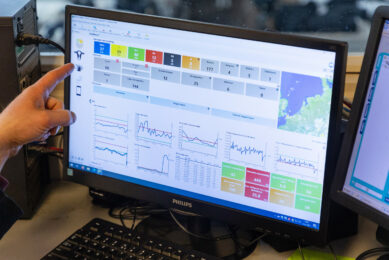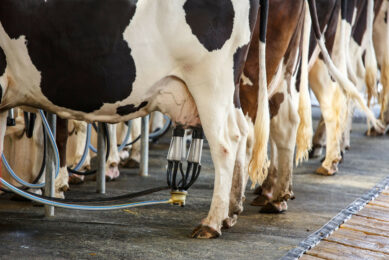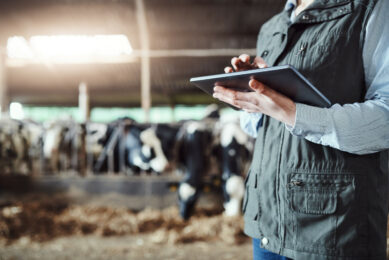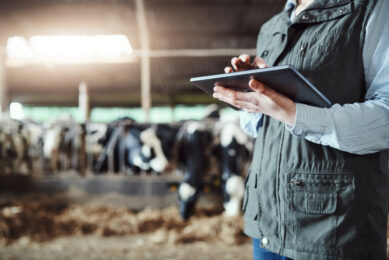Automatic lameness detection: Lame vs sound gait
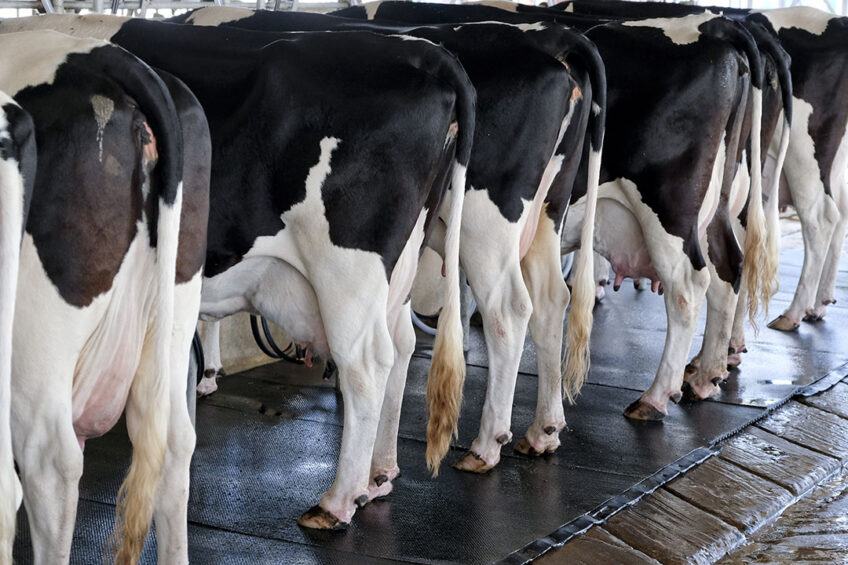
Farmers visually recognise only a third of the cows in their herd that are assessed as severely lame cows by researchers. Automated lameness detection methods with high sensitivity for early lameness may offer a way to identify lameness more accurately in intensive dairy production systems.
Lameness is an important health and welfare issue that causes considerable economic losses because of additional labour, repeated treatments, euthanasia, early culling and (re)production losses in the dairy industry.
It is estimated that up to 50% of dairy cows at a given farm are lame. Although lameness is a prevalent condition in dairy production systems, its identification can be unreliable due to lack of individual animal observation for gait and posture abnormalities and standard evaluation criteria. Early and accurate lameness detection and treatment is essential to prevent financial losses and welfare problems. Visual lameness scoring is the most common method used to evaluate lameness, as it is easy to use and cheap to implement, but it is time-consuming, labour-intensive and prone to observer error due to human visual perception limitations.
Dairy cows may instinctively hide lameness as a self-preservation mechanism until it becomes severe, which makes lameness detection during the early stages difficult when using visual lameness scoring. Studies show that farmers visually recognise only a third of the cows in their herd that have been assessed as severely lame cows by researchers. Therefore, automated lameness detection methods with high sensitivity for early lameness, which do not rely on human eyes and are not subjective, may offer a way to identify lameness more accurately in intensive dairy production systems.
Kinematic gait characteristics of both lame and sound cows in combination with the behaviour-based measures (i.e., lying, standing and active behaviour) can provide a baseline for the development of a robust automatic on-farm lameness detection system.
Lameness in dairy cattle
Lameness is a major condition affecting animal welfare and profitability. Lameness is defined as a deviation from the normal gait pattern due to compensatory movements to avoid any pain or discomfort. It is caused by lesions, diseases and other factors such as genetics, nutrition, housing systems and management practices. Lameness is regarded as an indicator of poor welfare because of its association with pain, discomfort, reduced mobility and reduced ability to cope with the environment.
Dairy cattle lameness prevalence in the UK is estimated at 36.8%, in Switzerland at 14.8% and in the northeastern United States at 54.8%. The worldwide cattle lameness prevalence ranges from 14% to 31%. Direct lameness costs include increased workload, medical treatment, decreased milk yield, reduced (re)productive performance, increased culling rate and increased production costs. It is estimated that lameness costs approximately £128 million/year (US$ 164 million/year) to the UK dairy industry.
Visual lameness score
Visual scoring is done against a 1 to 5 scoring scale (1 = sound, 2 = imperfect locomotion, 3 = mild lameness, 4 = moderate lameness, 5 = severe lameness) which considers various parameters such as gait asymmetry, head bopping, back curvature, the spine angle in relation to the interdigital space and reluctance to bear weight on the affected limb.
Gait characteristics of sound dairy cattle
The cattle gait cycle consists of 2 main phases: the weight-bearing (stance phase) and the non-weight-bearing (swing phase). Gait variables calculated from kinematic measurements are presented in Table 1.
Gait characteristics of lame dairy cattle
Changes in gait characteristics can help in identifying the region of the hoof in which the lameness is located or defining whether the cause of lameness is in the hoof or the upper limb. According to the Merck Veterinary Manual, “When there is pain in the toe, the stance phase of the stride is reduced considerably. In contrast, if the pain is in the heel, the swing phase of the stride is reduced, or the hoof is not carried as far forward as is normal.”
Additionally, shortened weight bearing and quick swing phases to minimise contact with the ground are associated with lesions in the hoof, whereas the limb being held in extension during swing phase – as flexion causes pain – is linked with disorders in the upper limb.
Automatic lameness detection
Kinematic analysis combined with behavioural change detection using sensors, data and image analysis can be used to develop a fully automated and continuous lameness detection system. Kinematic analysis measures the movement geometry and calculates different gait aspects such as stride length, and stance and swing duration.
Behavioural change parameters indicating lameness include uneven weight distribution among the legs, greater weight shifting among legs while standing, increased lying times and bouts, reduced walking speed and changes in feeding behaviour and activity. A variety of sensors such as accelerometers, cameras, pressure mats and weighing platforms can be used to detect the behavioural and gait changes due to lameness.
Sensors for automatic lameness detection
Accelerometer
An accelerometer is used to measure cow gait symmetry to associate the gait changes resulting from lameness with various time scales. Additionally, difference in walking duration between lameness scores 1 and 2 and day-to-day variation in lying and standing duration and frequency, motion index and number of steps recorded with 3-dimensional accelerometer is useful for early lameness detection.
Camera
Step frequency extracted from image analysis and leg swing analysis using computer vision techniques are used to develop an automatic and continuous system for scoring cattle locomotion to detect lameness with high accuracy and practicability.
Pressure mat and weighing platform
A pressure mat is used to measure the spatiotemporal kinematic and force variables, asymmetry and speed to detect cattle lameness. Weighing platforms can accurately calculate cattle step frequency, track a cow’s walking pattern over time and detect deviations from usual values to assess lameness.
Conclusion
Kinematic gait characteristics of lame and sound cows in combination with behaviour-based measures can provide a baseline for the development of a commercially suitable automated lameness detection system. However, large-scale studies to assess the sensitivity and specificity of the measures under practical conditions and delicate software are needed to have a robust system for the farm environment.



